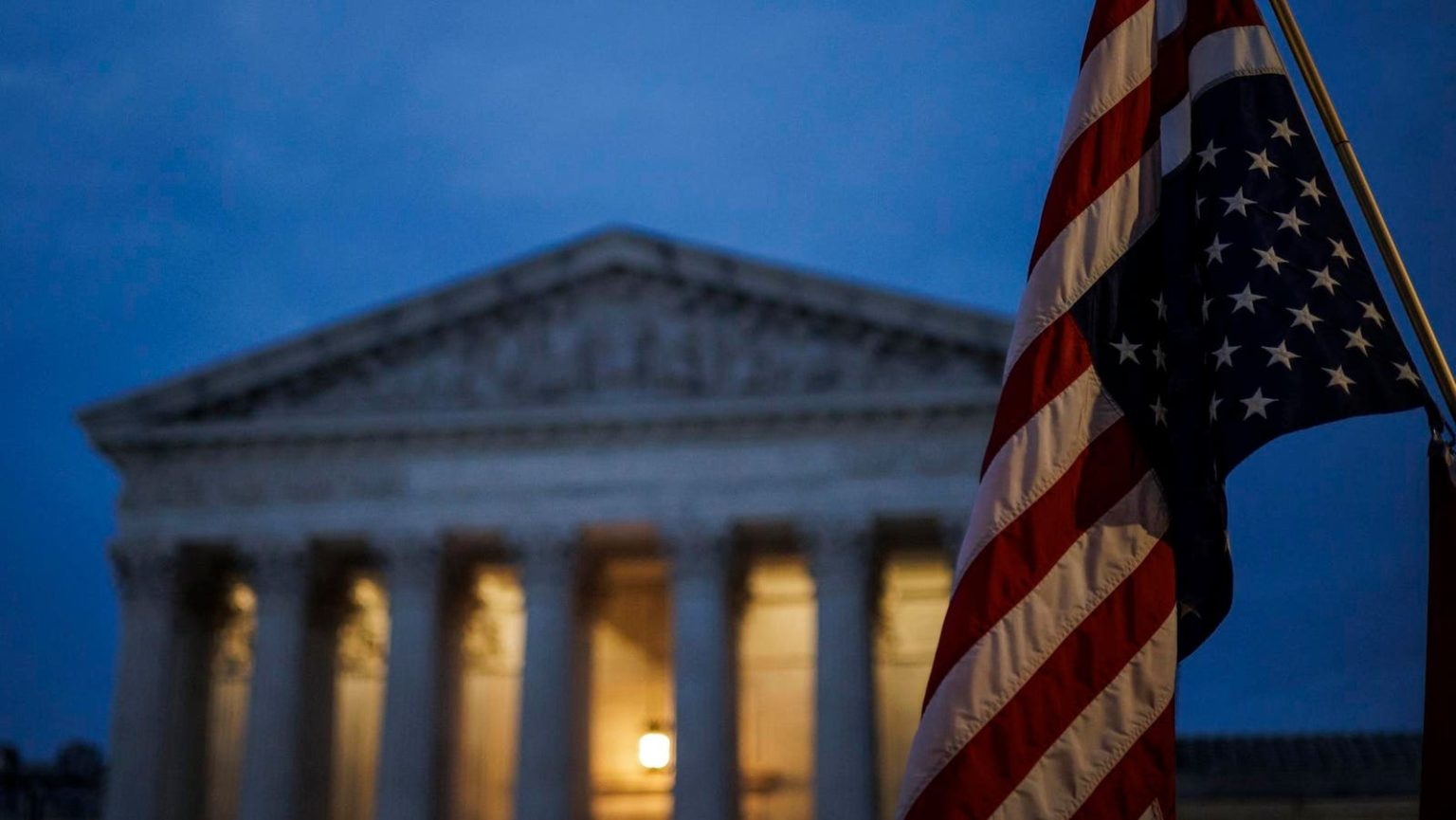The use of the upside-down American flag as a symbol of distress has gained popularity among right-wing supporters following former President Donald Trump’s 34-count felony conviction. Figures such as Donald Trump Jr., Lara Trump, and Rep. Marjorie Taylor Green have all shared images of the distress symbol in recent days. This trend is in line with reports that Supreme Court Justice Samuel Alito’s residence displayed the controversial flag after the Jan. 6 riots at the Capitol. However, the upside-down flag has been used by various groups across the political spectrum in recent years, from Jan. 6 rioters to Black Lives Matter protesters.
The New York Times reported last month that Justice Alito flew the upside-down flag outside his home in Alexandria, Virginia, just over a week after the Jan. 6 Capitol riots. This led to calls from Democrats for Alito to recuse himself from pending Jan. 6 related cases. A subsequent report revealed that Alito also displayed a flag used by Jan. 6 rioters at his New Jersey home, further fueling recusal pleas. Despite these calls, Alito, a conservative justice appointed by former President George W. Bush, has rejected them, claiming that his wife was responsible for flying the flags and that he was not involved in the decision.
The upside-down flag has become a common sight at protests over government policies in the past decade, regardless of political affiliation. It has been used by various groups to convey a sense of distress or dissatisfaction with the status quo. The recent adoption of the symbol by right-wing supporters in response to Trump’s conviction adds another layer to its complex history and meaning. As the symbol continues to be utilized by different groups for various purposes, its significance is likely to evolve and adapt to changing political climates.
The use of the upside-down flag by figures like Donald Trump Jr., Lara Trump, and Rep. Marjorie Taylor Green reflects their support for Trump and their belief that his conviction is unjust. By displaying the distress symbol, they are signaling their opposition to the legal proceedings against Trump and their belief that he is being unfairly targeted. This act of solidarity with Trump highlights the divisive nature of his presidency and the strong emotions his supporters continue to feel towards him, even after his time in office.
While the upside-down flag has traditionally been seen as a symbol of distress, its meaning has become more nuanced in recent years as it has been used by different groups for varying purposes. The current use of the symbol by right-wing supporters in response to Trump’s conviction adds another layer to its complex history and significance. As debates over the flag’s meaning and usage continue, it remains a potent symbol of political dissent and a reminder of the deep divisions within American society.













